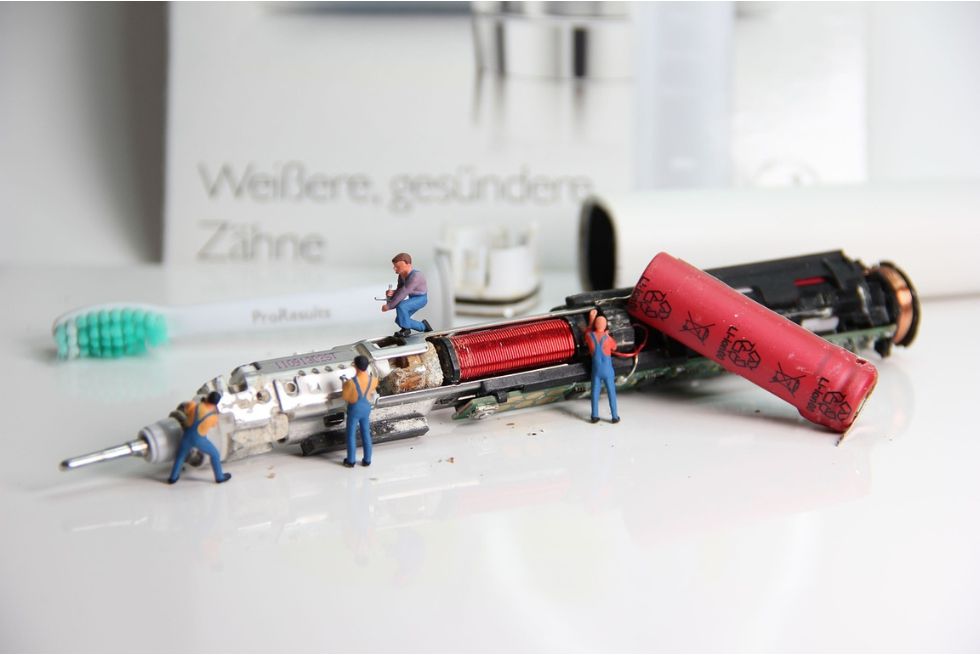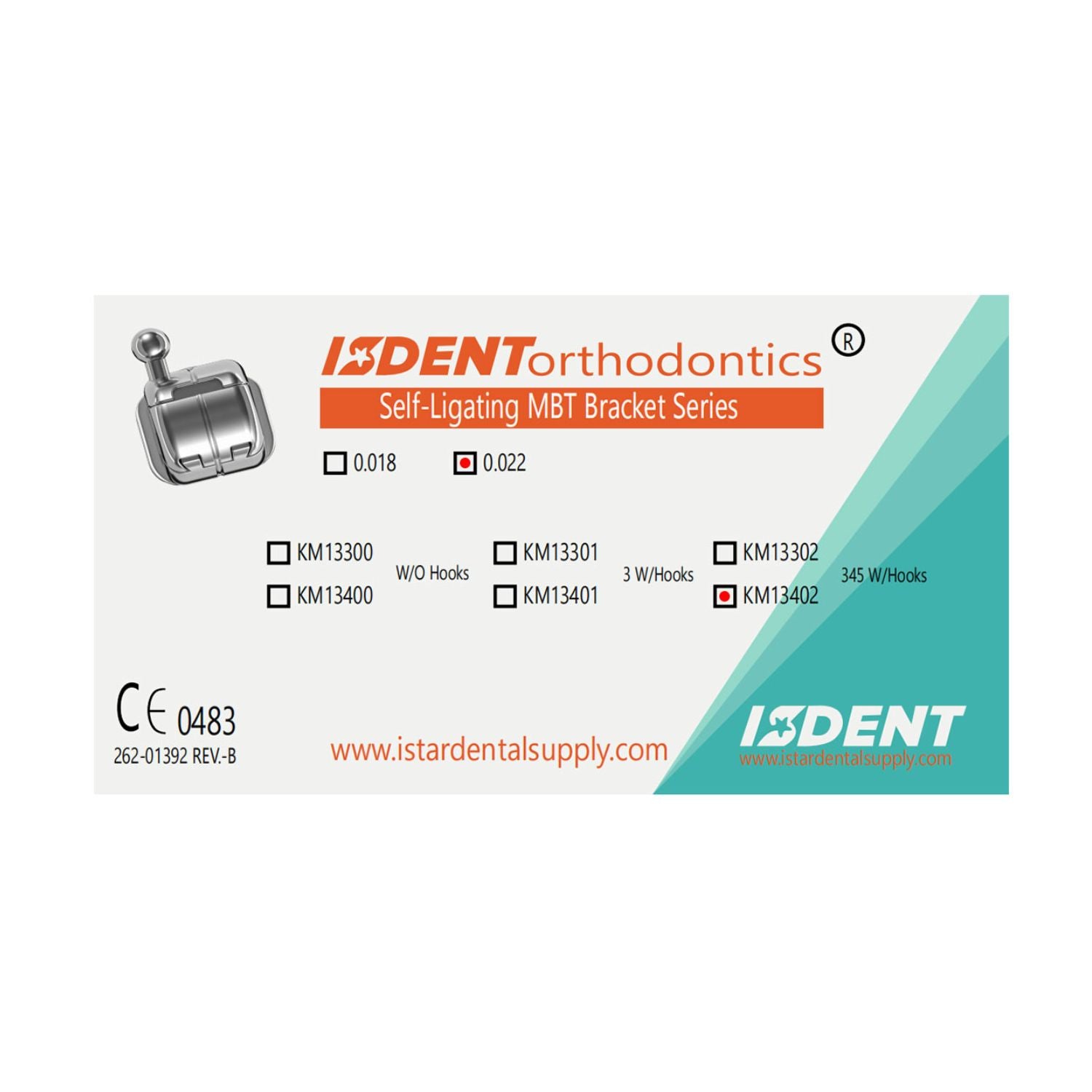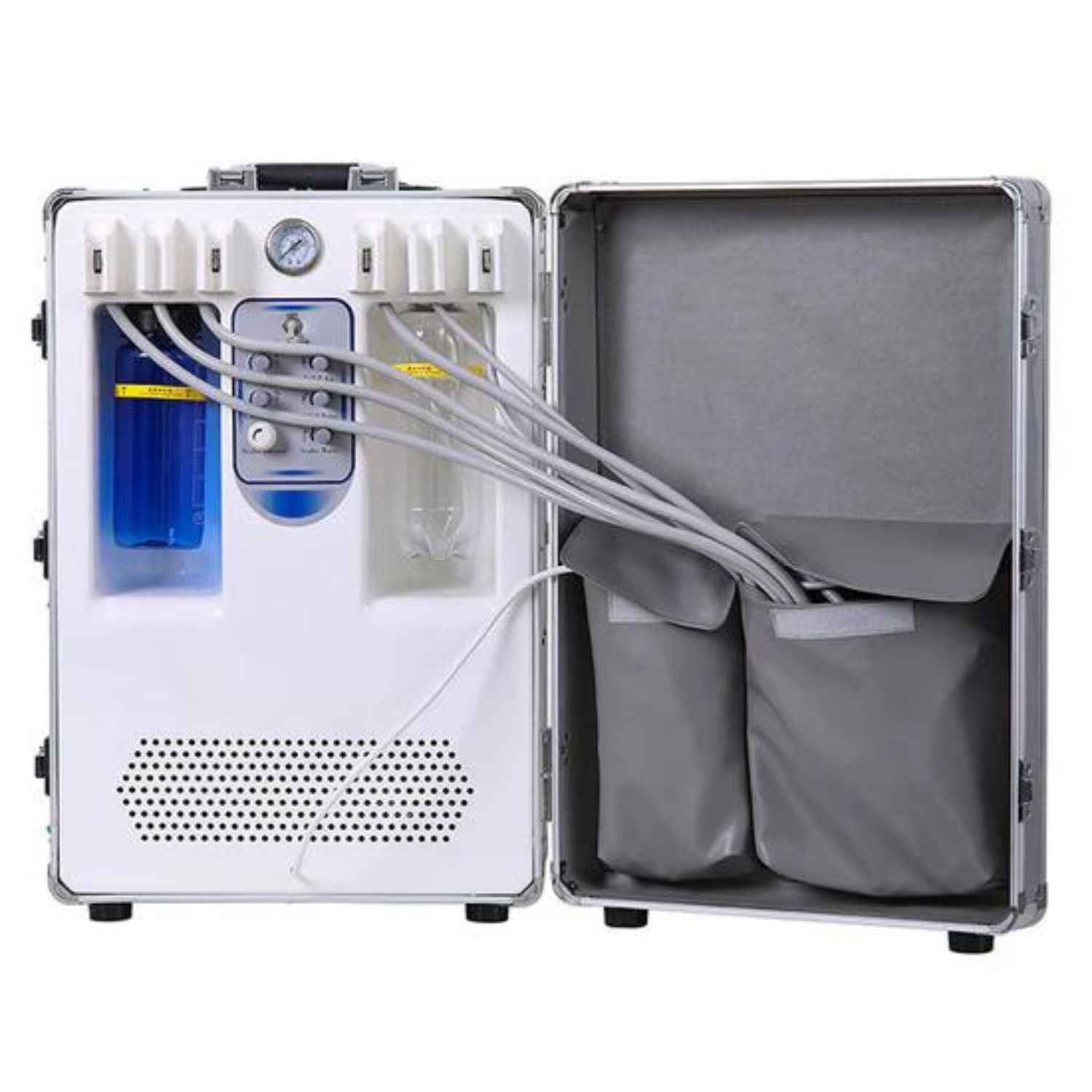Dental handpieces are used daily in dental clinics, so it's inevitable that they will encounter some issues and malfunctions.
Some problems can be repaired by dentists themselves, but it's important to note that some repairs may require professional assistance. Some of these issues include:
Low Torque: Reduced torque output can result from worn-out or damaged bearings, turbine, or other internal components. This may lead to slow or inefficient operation of the handpiece.
Overheating: Overheating of the handpiece can occur due to friction from high-speed rotation, inadequate cooling, or blockages in the air or water lines. This can lead to discomfort for the patient and potential damage to the handpiece.
Noise or Vibration: Excessive noise or vibration during operation may indicate misalignment, worn-out bearings, or other internal issues. This can affect the comfort of both the dentist and the patient and may indicate the need for repairs or maintenance.
Stalling or Seizing: The handpiece may stall or seize up during use, preventing proper rotation. This can be caused by debris or foreign objects obstructing the turbine, worn-out components, or improper lubrication.
Leaks: Leaks of air or water from the handpiece can occur due to damaged seals, loose connections, or cracks in the housing. This can affect the functionality of the handpiece and may lead to reduced efficiency during dental procedures.
Chuck Malfunction: Problems with the chuck mechanism can prevent proper clamping or removal of burs, leading to difficulties in changing or securing attachments.
Erosion or Corrosion: Exposure to moisture, chemicals, or improper cleaning methods can lead to erosion or corrosion of the handpiece components over time, affecting their integrity and performance.
Weak Spray: Insufficient water or air spray from the handpiece can result from blockages in the lines, worn-out or damaged components, or inadequate pressure.
Addressing these common dental handpiece problems promptly through proper maintenance, repairs, or replacement of worn-out parts is essential to ensure optimal performance and longevity of the equipment. Regular servicing by qualified technicians and adherence to manufacturer guidelines for cleaning, lubrication, and sterilization can help prevent these issues and prolong the life of dental handpieces.


Problem 1: Low Torque
Fixing low torque on a dental handpiece may require several steps, depending on the underlying cause of the issue. Here are some common troubleshooting steps and solutions:
Inspect the Handpiece: Start by inspecting the handpiece for any visible damage, such as worn-out bearings, damaged turbine blades, or debris obstructing the turbine.
Check Air and Water Lines: Ensure that the air and water lines connected to the handpiece are free from blockages or restrictions. Clean or replace any blocked or damaged lines as needed.
Lubrication: Proper lubrication is essential for ensuring smooth operation and optimal torque output. Apply a small amount of handpiece lubricant to the turbine and other moving parts according to the manufacturer's guidelines.
Replace Bearings or Turbine: If the bearings or turbine are worn out or damaged, they may need to be replaced. Consult the handpiece manufacturer or a qualified technician for replacement parts and instructions on how to install them.
Adjust Air Pressure: Check the air pressure from the dental unit and adjust it to the recommended range for the handpiece. Insufficient air pressure can affect the torque output of the handpiece.
Regular Maintenance: To prevent low torque issues in the future, it's essential to perform regular maintenance on the handpiece, including cleaning, lubrication, and inspection of internal components. Follow manufacturer guidelines for maintenance and sterilization to ensure optimal performance.
Addressing low torque issues promptly is essential to ensure the effective functioning of dental handpieces during procedures. Regular maintenance, proper lubrication, and timely replacement of worn-out parts can help prevent low torque and prolong the life of dental handpieces. If low torque persists despite troubleshooting attempts, it's advisable to seek assistance from a qualified professional to diagnose and address the underlying cause.

Problem 2: Overheating
Overheating of the handpiece can occur due to various reasons, including prolonged use, inadequate cooling, or blockages in the air or water lines. To address overheating issues, here are some troubleshooting steps and solutions:
Check Air and Water Flow: Ensure that the air and water lines connected to the handpiece are functioning correctly and free from blockages. Check for kinks or restrictions in the lines and clear any obstructions.
Inspect Handpiece Cooling System: Examine the handpiece cooling system, including the water spray, to ensure proper functioning. Clean or replace any clogged or damaged components, such as water nozzles or filters.
Adjust Speed and Pressure: Reduce the speed or pressure settings on the dental unit if the handpiece overheats during use. Lowering the speed or pressure can help reduce friction and heat buildup.
Allow Cooling Periods: Take breaks between procedures to allow the handpiece to cool down. This can prevent overheating and prolong the life of the handpiece.
Proper Maintenance: Regularly clean and lubricate the handpiece according to manufacturer guidelines to ensure optimal performance and prevent overheating. Pay attention to the cooling system components and replace any worn-out parts as needed.
Inspect for Damage: Check the handpiece for any signs of damage or wear that may contribute to overheating, such as worn-out bearings or damaged turbine blades. Replace any damaged components to restore proper function.
By following these steps and addressing the root cause of overheating, you can effectively troubleshoot and resolve this issue with your dental handpiece, ensuring optimal performance and reliability during dental procedures.
Problem 3: Noise or Vibration
Noise or vibration in dental handpieces can indicate various underlying issues that may affect their performance and comfort during use. To address noise or vibration problems, consider the following troubleshooting steps:
Inspect Handpiece Components: Begin by visually inspecting the handpiece for any visible damage or abnormalities. Check for loose or damaged components, such as bearings, turbines, or chuck mechanisms, which could contribute to noise or vibration.
Clean and Lubricate: Proper cleaning and lubrication are essential for maintaining smooth operation and reducing friction within the handpiece. Clean the handpiece thoroughly, paying attention to the turbine, bearings, and chuck mechanism. Apply a recommended handpiece lubricant to ensure smooth movement of internal components.
Check for Misalignment: Misalignment of internal components can cause noise or vibration during operation. Ensure that all components are properly aligned and securely fastened within the handpiece housing. Adjust or tighten any loose components as needed.
Inspect Air and Water Lines: Check the air and water lines connected to the handpiece for any blockages or restrictions. Clean or clear any obstructions that may impede the flow of air or water to the handpiece, as inadequate cooling or lubrication can contribute to noise or vibration.
Replace Worn-out Parts: Worn-out or damaged components, such as bearings or turbines, can cause noise or vibration in the handpiece. If visual inspection reveals signs of wear or damage, consider replacing these parts with high-quality replacements from a reputable manufacturer.
Adjust Settings: If the handpiece has adjustable settings, such as speed or torque, consider adjusting them to see if it reduces noise or vibration during operation. Experiment with different settings to find the optimal balance between performance and comfort.
Problem 4: Stalling or Seizing
Stalling or seizing of dental handpieces can significantly impede dental procedures and may indicate underlying issues that require attention. To address stalling or seizing problems, consider the following troubleshooting steps:
Inspect for Debris or Obstructions: Check the handpiece for any debris, foreign objects, or obstructions that may be causing it to stall or seize. Clean the handpiece thoroughly, paying particular attention to the turbine, chuck mechanism, and air and water lines.
Lubricate Moving Parts: Apply a recommended handpiece lubricant to the turbine, bearings, and other moving parts to ensure smooth operation and reduce friction. Proper lubrication can help prevent stalling or seizing caused by excessive friction.
Check for Wear or Damage: Inspect the handpiece for signs of wear or damage, such as worn-out bearings, damaged turbine blades, or worn chuck mechanisms. Replace any worn or damaged parts with high-quality replacements from a reputable manufacturer.
Adjust Settings: If the handpiece has adjustable settings, such as speed or torque, consider adjusting them to see if it reduces stalling or seizing during operation. Experiment with different settings to find the optimal balance between performance and comfort.
Inspect Air and Water Lines: Ensure that the air and water lines connected to the handpiece are free from blockages or restrictions. Clean or clear any obstructions that may impede the flow of air or water, as inadequate cooling or lubrication can contribute to stalling or seizing.
By following these troubleshooting steps, you can effectively address stalling or seizing problems with your dental handpiece and ensure smooth and efficient operation during dental procedures.
Problem 5: Leaks
If your dental handpiece is leaking air or water, it can affect its performance and may indicate underlying issues that require attention. Here's what you can do to address the problem:
Inspect Connections: Check all connections, including air and water lines, fittings, and couplings, for any signs of damage, looseness, or wear. Tighten any loose connections and replace any damaged or worn parts as needed.
Check Seals and O-rings: Inspect the seals and O-rings in the handpiece and connections for signs of damage or deterioration. Replace any worn or damaged seals or O-rings to ensure a proper seal and prevent leaks.
Clean and Clear Blockages: Check for any blockages or obstructions in the air and water lines that may be causing leaks. Use compressed air or a suitable cleaning solution to clear any blockages and ensure proper flow.
Adjust Air and Water Pressure: Adjust the air and water pressure settings on the dental unit to the recommended levels for the handpiece. Excessive pressure can cause leaks, so reducing the pressure may help alleviate the problem.
Replace Worn-out Components: If the handpiece or its internal components, such as the turbine or chuck mechanism, are worn out or damaged, they may need to be replaced. Consult the handpiece manufacturer or a qualified technician for replacement parts and instructions.
Problem 6: Chuck Malfunction
If you experience chuck malfunction on your dental handpiece, it can affect the ability to properly secure or remove attachments such as burs or prophy angles. Here are steps you can take to address this issue:
Inspect the Chuck: Begin by inspecting the chuck mechanism for any visible damage, debris, or foreign objects that may be interfering with its operation. Clean the chuck thoroughly and remove any obstructions if present.
Check for Wear or Damage: Examine the chuck jaws and components for signs of wear, corrosion, or damage. Worn-out chuck jaws may not grip attachments securely, while damaged components may hinder the chuck's ability to operate smoothly. Replace any worn or damaged parts as needed.
Lubricate the Chuck: Apply a small amount of lubricant to the chuck mechanism according to the manufacturer's recommendations. Proper lubrication can help ensure smooth operation of the chuck and prevent sticking or seizing.
Adjust Chuck Tightness: If the chuck does not grip attachments securely, you may need to adjust the chuck tightness. Refer to the handpiece's user manual or manufacturer's instructions for guidance on adjusting the chuck tension or tightening mechanism.
Inspect Attachment Compatibility: Ensure that the attachments you are using are compatible with the chuck mechanism of your handpiece. Using attachments that are not designed for your handpiece may result in poor fit or malfunction.
By following these steps and addressing the root cause of the chuck malfunction, you can effectively resolve the issue and ensure proper functionality of your dental handpiece during procedures. Regular maintenance and inspection can help prevent chuck malfunction and other issues from occurring in the future.
Problem 7: Erosion or Corrosion
If you encounter erosion or corrosion on your dental handpiece, it's important to address it promptly to prevent further damage and ensure the continued functionality of the handpiece. Here's what you can do:
Inspect the Handpiece: Begin by visually inspecting the handpiece for signs of erosion or corrosion. Pay close attention to areas that are frequently exposed to water, chemicals, or other corrosive substances, such as the exterior surfaces, chuck mechanism, and turbine.
Clean the Handpiece: Thoroughly clean the affected areas of the handpiece using a mild detergent or cleaning solution and a soft brush. Carefully remove any debris, residue, or buildup that may be contributing to the erosion or corrosion.
Remove Corrosion: If corrosion is present on metal components of the handpiece, such as the chuck mechanism or turbine, you may need to gently remove it using a suitable cleaning agent or rust remover. Be sure to follow the manufacturer's recommendations and safety precautions when using chemical cleaners.
Prevent Future Corrosion: Take steps to prevent future corrosion by avoiding exposure to moisture, chemicals, and other corrosive substances. Store the handpiece in a clean, dry environment when not in use, and regularly clean and lubricate it according to the manufacturer's recommendations.
Replace Worn or Damaged Parts: If erosion or corrosion has caused significant damage to any components of the handpiece, such as bearings, turbines, or chuck mechanism, they may need to be replaced. Consult the handpiece manufacturer or a qualified technician for replacement parts and instructions.
Problem 8: Weak Spray
If you're experiencing weak spray from your dental handpiece, it can impact the efficiency of dental procedures. Here's what you can do to address this issue:
Check Water Supply: Ensure that the dental unit's water supply is functioning correctly and providing adequate pressure. Weak spray can occur if there are issues with the water source or if the water pressure is too low. Adjust the water pressure settings on the dental unit if necessary.
Inspect Water Lines: Check the water lines connected to the handpiece for any blockages, kinks, or leaks that may be restricting the flow of water. Clean or clear any obstructions and repair any leaks to restore proper water flow.
Clean Water Nozzles: Clean the water nozzles or spray ports on the handpiece to remove any buildup or debris that may be obstructing the spray. Use a fine needle or cleaning brush to gently dislodge any particles and ensure unobstructed water flow.
Adjust Spray Settings: Some dental handpieces have adjustable spray settings that allow you to control the flow and intensity of the spray. Check the spray settings on the handpiece and adjust them as needed to achieve the desired spray pattern and pressure.
Check Handpiece Compatibility: Ensure that the handpiece and attachments you are using are compatible with the dental unit and water supply system. Using incompatible equipment may result in poor spray performance.
Replace Water Filter: If your dental unit is equipped with a water filter, check and replace it regularly according to the manufacturer's recommendations. A clogged or dirty water filter can restrict water flow and lead to weak spray.
By addressing these potential causes of weak spray, you can improve the performance of your dental handpiece and ensure efficient and effective dental procedures. Regular maintenance and inspection of the handpiece and water delivery system are essential for optimal performance.
In summary, whatever issues arise with dental handpieces, they should be promptly repaired or replaced to ensure smooth dental procedures.
If the above methods fail to resolve your issue, consider seeking assistance from qualified dental equipment technicians or manufacturers.
If you are using Istar dental handpieces, feel free to contact us at any time, and we will continue to assist you until the problem is resolved!







